After a rebellion decimated the Fongshan County (鳳山縣) capital in 1721, the Kangxi Emperor finally decided to allow the construction of walled cities in Taiwan. The following year, with the completion of an earthen wall surrounding it, Old Fongshan City (鳳山舊城) became Taiwan’s first walled city. Over a century later, the wall was replaced with a stone one, much of which remains standing today. To walk the length of this wall is to walk through centuries of history in just one afternoon, as modern-day amenities intermingle with traces of Taiwan’s past.
Any visit here should begin at the Center of Old Fongshan City History (見城館). It is a modern facility featuring a VR introduction to the area (included in the ticket price of NT$49 for adults, NT$29 for Kaohsiung residents), handheld AR devices to further enrich exhibits and a scale model of the old city. What really makes a visit to the center worthwhile is the multimedia presentation incorporating this model that is played twice an hour. As the history of the region is presented in video format (with English subtitles) on a large screen, different components of the model appear and disappear from the model floor, accompanied by lighting and visual effects, allowing visitors to see 300 years of history played out in front of their eyes. Incredible care went into the preparation of this show and it alone is worth the price of admission.
With a mental picture of the area in mind, it’s time to continue the tour of Old Fongshan City, following the wall counterclockwise. Beside the parking lot, the wall ends abruptly at Shengli Road. During the Japanese era, traffic flow became a more important consideration than historical preservation and it was decided to punch a hole right through the wall and the adjacent Turtle Mountain (龜山) here to allow for quicker access to the Zuoying Station (左營) via Shengli Road.
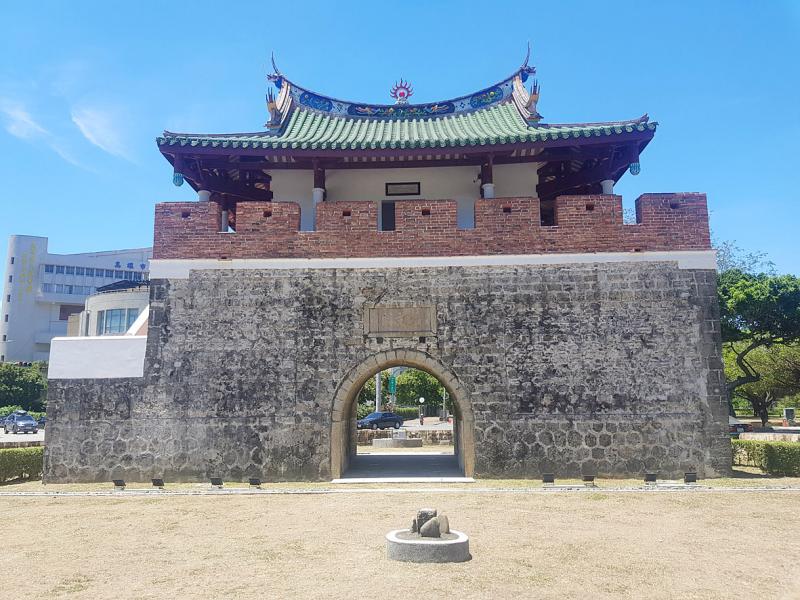
Photo: Tyler Cottenie
On the other side of Shengli Road, the wall picks up again and rounds the tip of Turtle Mountain where it meets the shore of Lotus Lake. This lake is a tourist destination in and of itself, with an eclectic mix of Daoist, Buddhist and Confucian temples, pagodas, walkways, restaurants and even a water park. A walk around the lake to take in all the sights could easily fill half a day, and the water park features a mix of amenities for all ages, including large inflatable waterslides and a cable-tow wakeboard course.
After rounding Turtle Mountain and crossing Shengli Road once again, the original stone wall continues on toward the North Gate, the only one featuring door guards carved in stone. Across from the gate is the Zhenfu Temple (鎮福廟), whose origins date back to Ming Dynasty times but whose current structure was rebuilt after American bombardment destroyed it in World War II. Look carefully at the middle of this intersection and you will notice a large metal disk. Under this disk is a well, used for centuries by locals for drinking water, but eventually covered up to allow for better traffic flow.
On the inside of the wall near North Gate is Donglai New Village (東萊新村), an unusual collection of houses abutting the wall, sprawled out among a confusing network of meandering narrow lanes that are at times only wide enough for foot traffic. The majority of homes here are one-story structures, only a few ping in size, and in varying states of dilapidation. Some are already condemned for demolition, while others nearby have fresh coats of white paint and could be described as quaint. On the surface, this village appears to be a military dependents’ village, and indeed the original inhabitants did migrate here in 1949 from China. Walking through the narrow alleyways, one can still hear heavily accented Mandarin from elderly residents through open windows and doorways. However, as the original migrants were not actually members of the military, they did not enjoy the same privileges as those in dependents’ villages. The land they occupy is still owned by the military and residents are not allowed to rebuild or enlarge their homes. Residents here face an uncertain future in which they may be forced to leave at any time to make way for urban renewal projects. For now, Donglai Village remains; for how much longer it does so is anyone’s guess.
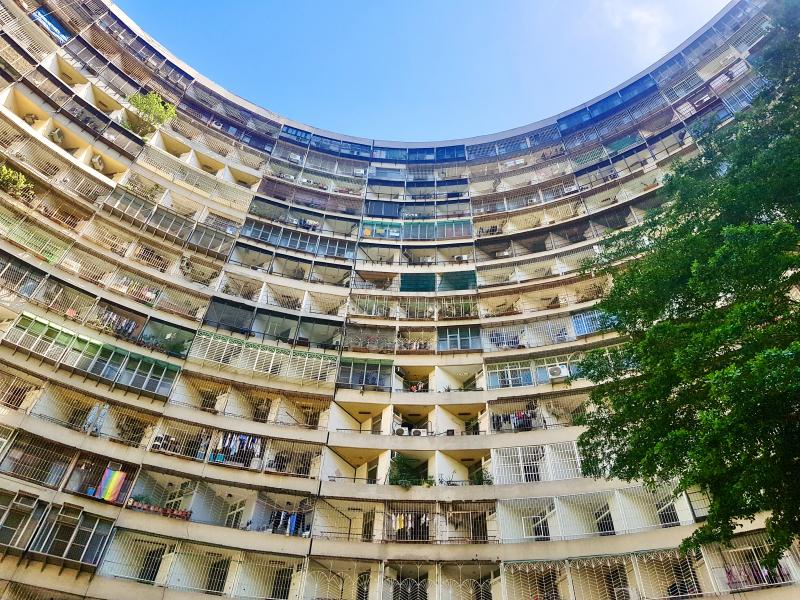
Photo: Tyler Cottenie
At Zuoying Avenue (左營大路), the original wall once again disappears. The section from here to the original West Gate and further around to the South Gate is almost entirely gone, demolished by the Japanese government to make room for military buildings. One small section of wall, complete with the remains of a Shinto shrine on top, is still standing to the west of Zuoying Avenue. The location of the West Gate was also rediscovered and excavated in recent years. These features are being restored in accordance with the Old Fongshan City Restoration Project, and may soon be open to the public. At the moment, however, the area is still a construction site on military land and no admittance is possible. For now, simply head straight down Zuoying Avenue to its end at a traffic circle, in the middle of which stands the South Gate.
This gate has been cut off from the wall on either side, again to allow for better traffic flow, but is nevertheless beautifully preserved. This gate has the distinction of being the only one of the four with a gatehouse on it, which visitors are free to explore. Just a three-minute walk to the southeast is the Guomao Housing Complex (果貿社區), an architectural, culinary and Instagramming hotspot. Built to replace an earlier military dependents’ village, this 13-building complex features a number of decades-old restaurants serving dishes from different regions in China. At the core of the complex is a park surrounded by two photogenic curved buildings that form a nearly complete circle in the sky.
Continuing counterclockwise along the wall from the South Gate, the wall is essentially intact all the way to the East Gate. This gate is where traffic from New Fongshan City (鳳山新城, modern-day Fengshan District) entered the Old City. Currently, one may still pass over the moat bridge and through the gate on foot or by bicycle. With recent restoration work completed, visitors may also ascend to the top of the gate and walk along a long section of the original wall. The calm surroundings and ability to experience most features of the original wall up close here undoubtedly make this the gate most worth visiting.
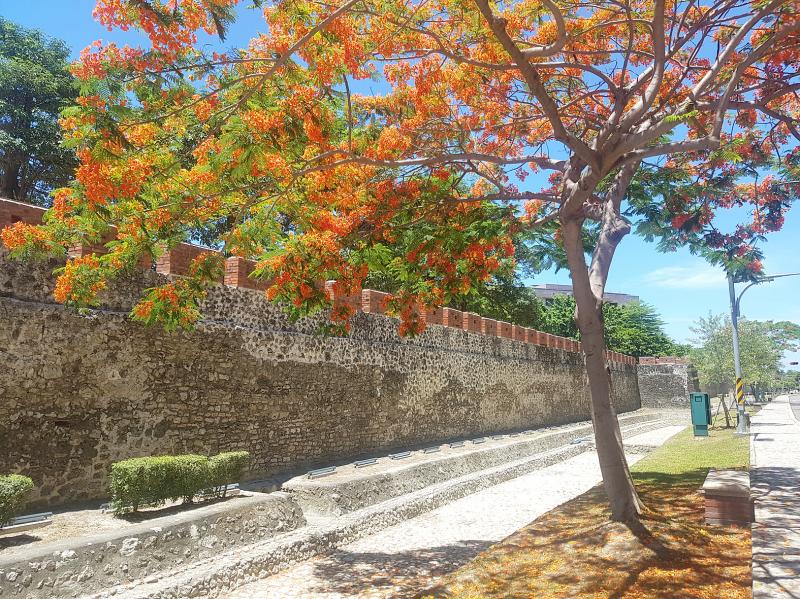
Photo: Tyler Cottenie
Continuing along the mostly intact wall on the inside, there is nothing but grassy fields now where military dependents’ villages and a Qing Dynasty academy once stood. For those who still have the energy, Turtle Mountain on the left has a number of hiking paths that include Republic of China military tunnels that are great fun to explore. For those who’ve had their fill of exploring, the parking lot where our journey started is just ahead. Our exploration of the old walled city has come full circle.
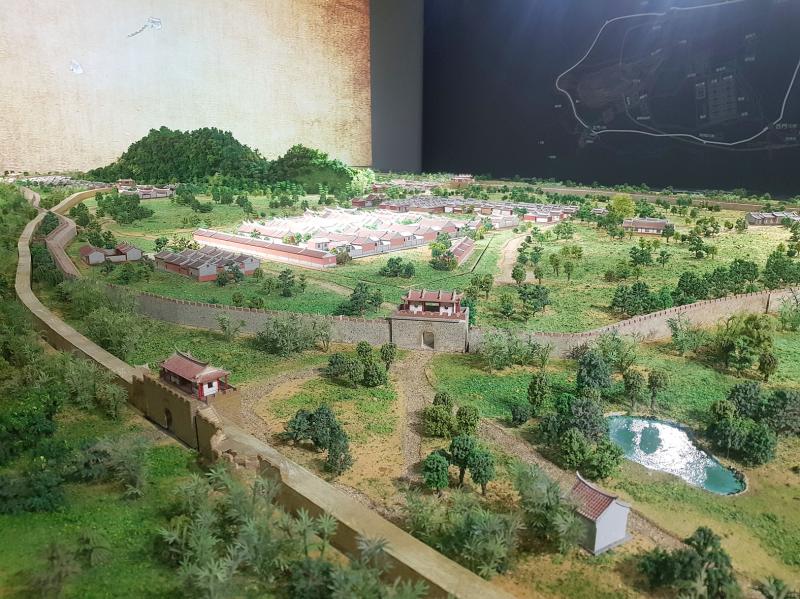
Photo: Tyler Cottenie
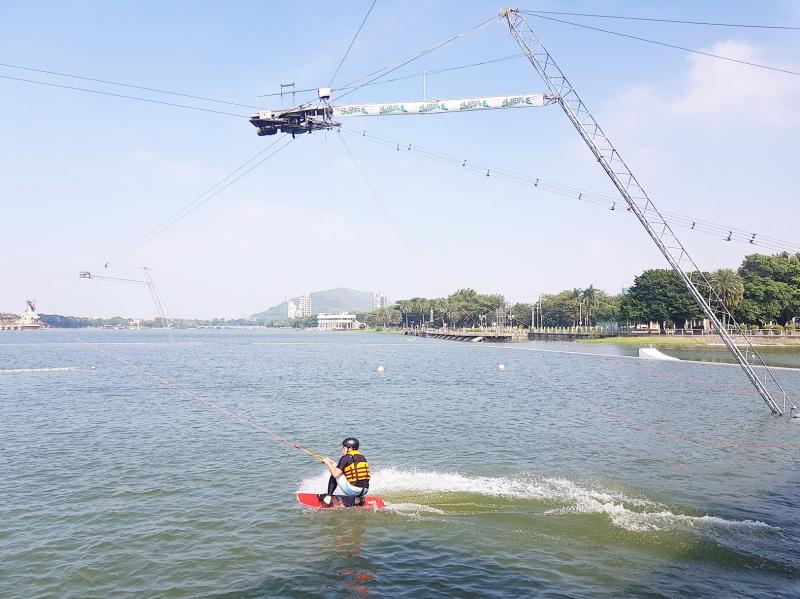
Photo: Tyler Cottenie
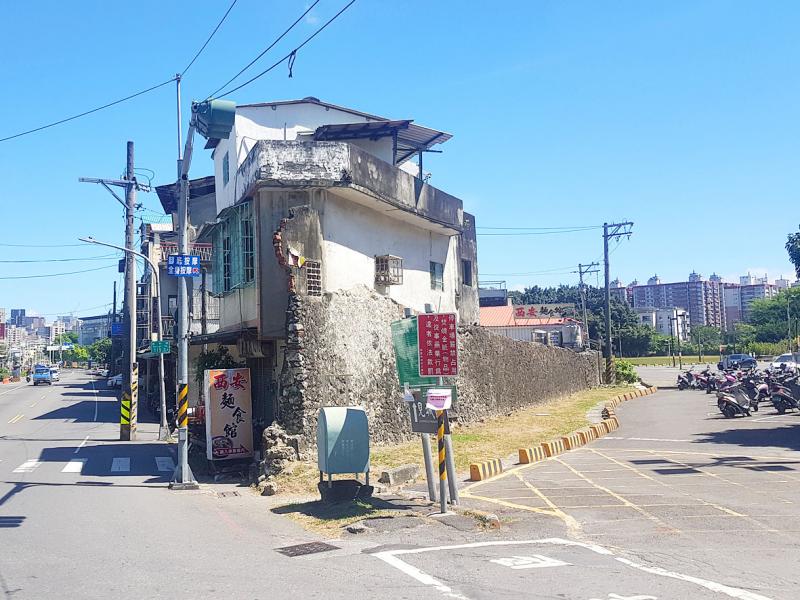
Photo: Tyler Cottenie

April 14 to April 20 In March 1947, Sising Katadrepan urged the government to drop the “high mountain people” (高山族) designation for Indigenous Taiwanese and refer to them as “Taiwan people” (台灣族). He considered the term derogatory, arguing that it made them sound like animals. The Taiwan Provincial Government agreed to stop using the term, stating that Indigenous Taiwanese suffered all sorts of discrimination and oppression under the Japanese and were forced to live in the mountains as outsiders to society. Now, under the new regime, they would be seen as equals, thus they should be henceforth
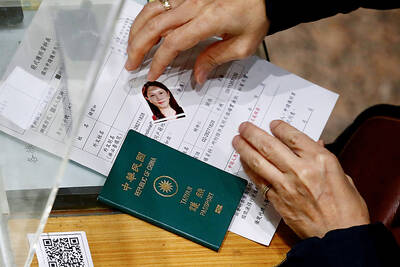
Last week, the the National Immigration Agency (NIA) told the legislature that more than 10,000 naturalized Taiwanese citizens from the People’s Republic of China (PRC) risked having their citizenship revoked if they failed to provide proof that they had renounced their Chinese household registration within the next three months. Renunciation is required under the Act Governing Relations Between the People of the Taiwan Area and the Mainland Area (臺灣地區與大陸地區人民關係條例), as amended in 2004, though it was only a legal requirement after 2000. Prior to that, it had been only an administrative requirement since the Nationality Act (國籍法) was established in

Three big changes have transformed the landscape of Taiwan’s local patronage factions: Increasing Democratic Progressive Party (DPP) involvement, rising new factions and the Chinese Nationalist Party’s (KMT) significantly weakened control. GREEN FACTIONS It is said that “south of the Zhuoshui River (濁水溪), there is no blue-green divide,” meaning that from Yunlin County south there is no difference between KMT and DPP politicians. This is not always true, but there is more than a grain of truth to it. Traditionally, DPP factions are viewed as national entities, with their primary function to secure plum positions in the party and government. This is not unusual

US President Donald Trump’s bid to take back control of the Panama Canal has put his counterpart Jose Raul Mulino in a difficult position and revived fears in the Central American country that US military bases will return. After Trump vowed to reclaim the interoceanic waterway from Chinese influence, US Defense Secretary Pete Hegseth signed an agreement with the Mulino administration last week for the US to deploy troops in areas adjacent to the canal. For more than two decades, after handing over control of the strategically vital waterway to Panama in 1999 and dismantling the bases that protected it, Washington has